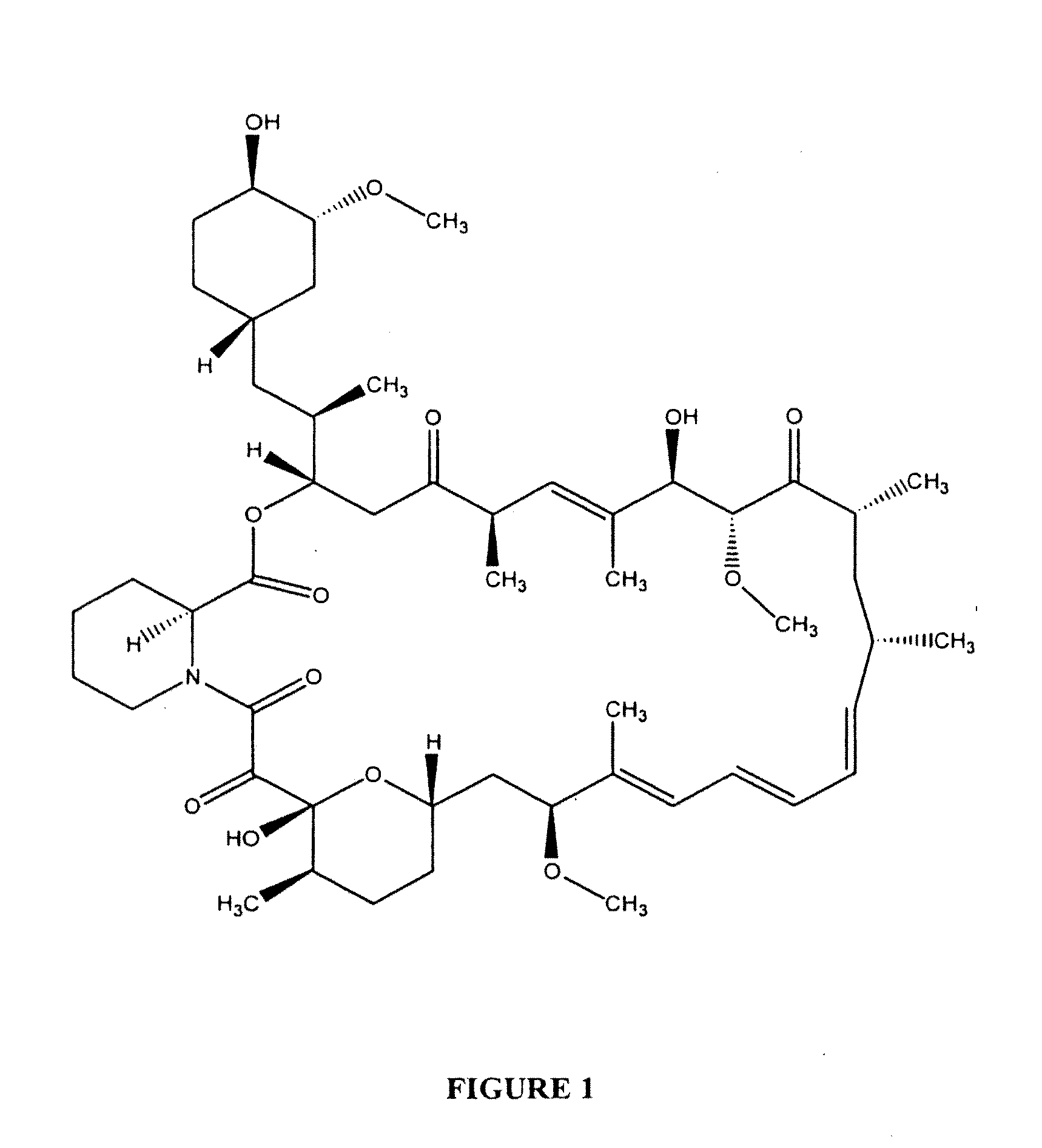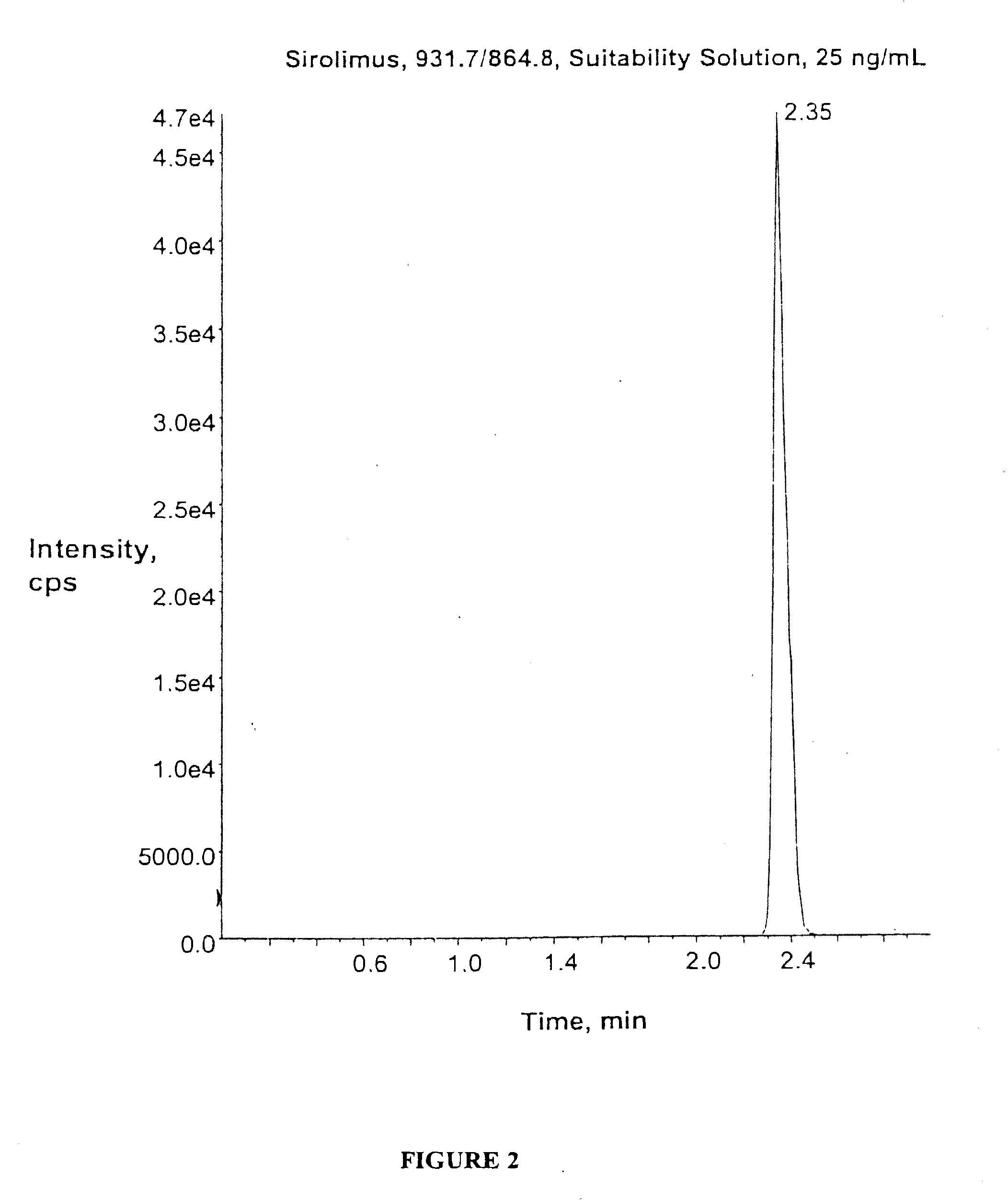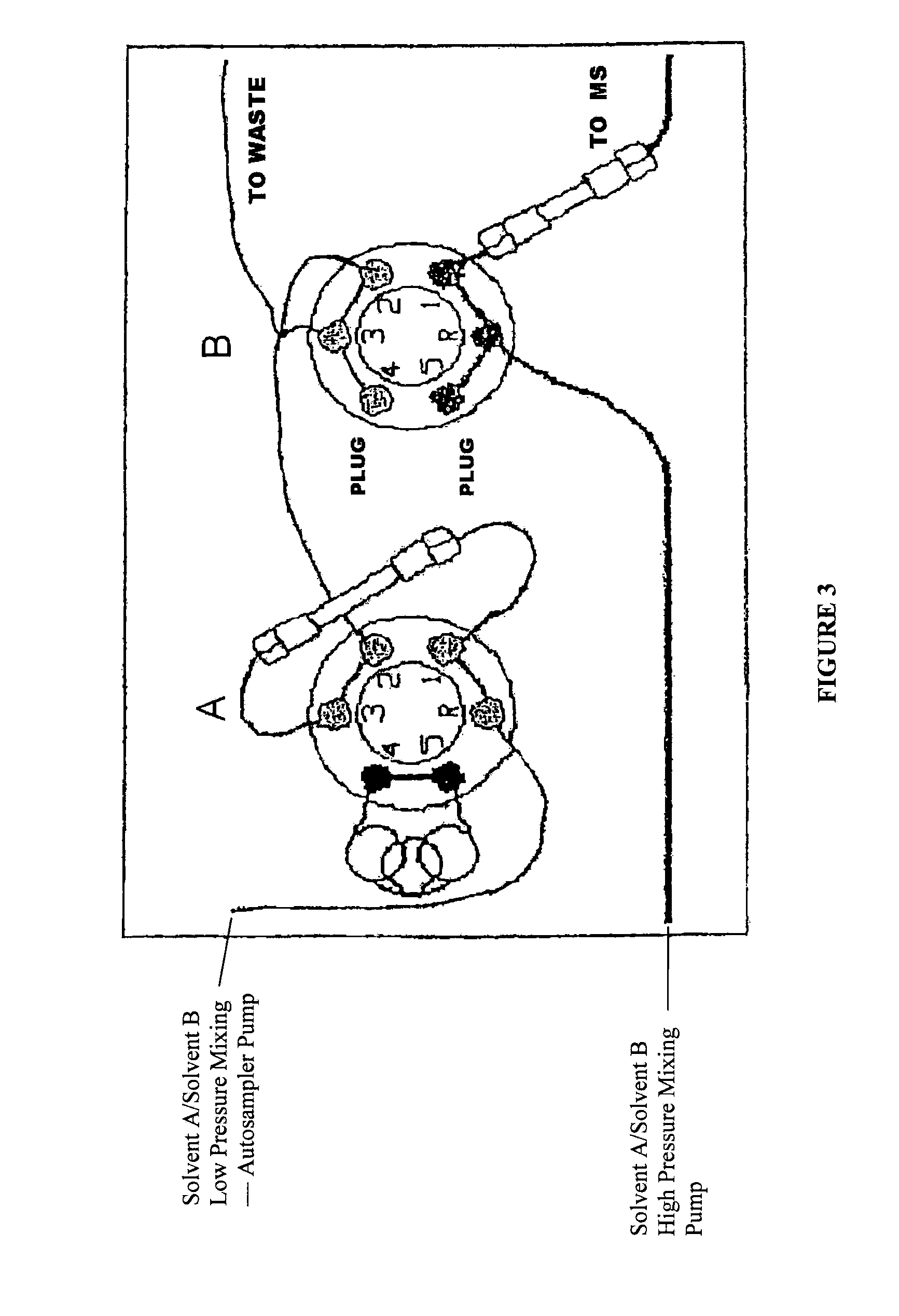Determination of lamotrigine by mass spectrometry
a mass spectrometry and lamotrigine technology, applied in mass spectrometers, instruments, separation processes, etc., can solve the problems of pruritis and cholestasis, time-consuming and complicated assays, and complex cortisol assays in serum, so as to reduce the potential for operator error, the platform is fast and cost-effective, and the effect of reducing the cost of assays
- Summary
- Abstract
- Description
- Claims
- Application Information
AI Technical Summary
Benefits of technology
Problems solved by technology
Method used
Image
Examples
example 1
Determination of Sirolimus by Mass Spectrometry
[0105]Sample Collection.
[0106]Human whole blood was collected in a sterile container and stored refrigerated or at room temperature until analysis. Samples were stable in non-coagulated samples for up to 7 days refrigerated, or 5 days at room temperature. Steady-state (0.5-1 hour pre-oral sirolimus dosage, 2 weeks following beginning of administration of drug) are preferred samples. A minimum volume of 1 mL was collected for an assay.
[0107]Sirolimus Assay Procedure.
[0108]Samples (0.2 mL) were precipitated by mixing with 0.4 mL ZnSO4, 0.4 mL acetone, and 0.05 mL internal standard extraction solution (32-desmethoxyrapamycin in 50% aqueous methanol). Following mixing and collection of the supernatant by centrifugation through a PVDF filter, each sample was placed into a well of a standard 96-well plate (MicroLiter Analyitical Supplies, Cat. # 07-3000). Samples at this stage should be maintained at 4°-8°.
[0109]96-well plates were loaded int...
example 2
Determination of Corticosteroids by Mass Spectrometry
[0118]Sample Collection.
[0119]Human urine was collected in a sterile container and stored refrigerated or at room temperature until analysis. Samples were stable for up to 7 days refrigerated, or 2 days at room temperature. In addition, samples may be frozen for up to 5 months if necessary. A minimum volume of 0.5 mL was used for an assay.
[0120]Cortisol Assay Procedure Using Positive-Mode MS.
[0121]Samples were loaded into a Perkin Elmer series 200 autosampler, together with low, medium, and high concentration controls (urine samples spiked with 10-20 ng / mL, 60-100 ng / mL, and 140-180 ng / mL cortisol). 450 uL of each sample was mixed with 450 uL 1% formic acid and vortexted. Samples (50 μL) were injected onto a TurboFlow™ PolarPlus™ extraction column (Cohesive Technologies No. 952242) in a Cohesive Technologies model 2300 HTLC system synchronized to a Perkin Elmer Sciex API 2000 LC / MS / MS system which used a set of four quadrupoles to...
example 3
Determination of Bile Acids by Mass Spectrometry
[0136]Sample Collection.
[0137]Human whole blood was collected in containers that do not contain anticoagulant, and permitted to clot. A minimum of 0.5 mL serum was used for each assay. Samples were stable for 7 days at room temperature, 14 days at 2°-8° C., and 1 month at −20° C.
[0138]The pH was adjusted to pH 4.0 with a 5 mM ammonium acetate solution adjusted to pH 4.0±0.1 with formic acid. The samples were then loaded onto a Perkin Elmer Series 200 autosampler for analysis using an on-line purification / analysis system system.
[0139]Bile Acid Assay Procedure.
[0140]The bile acid samples were analyzed using a HTLC / MS / MS procedure. The samples were first purified by loading them onto a HTLC extraction column (Cohesive Technologies Polar Plus™, Cat # 952242; a C-18 reverse phase packing). Following a wash step, the column was backflushed to elute bound bile acids, which were directly loaded on an analytical column (Metachem Technologies Ca...
PUM
| Property | Measurement | Unit |
|---|---|---|
| mass | aaaaa | aaaaa |
| diameter | aaaaa | aaaaa |
| diameter | aaaaa | aaaaa |
Abstract
Description
Claims
Application Information
 Login to View More
Login to View More - R&D
- Intellectual Property
- Life Sciences
- Materials
- Tech Scout
- Unparalleled Data Quality
- Higher Quality Content
- 60% Fewer Hallucinations
Browse by: Latest US Patents, China's latest patents, Technical Efficacy Thesaurus, Application Domain, Technology Topic, Popular Technical Reports.
© 2025 PatSnap. All rights reserved.Legal|Privacy policy|Modern Slavery Act Transparency Statement|Sitemap|About US| Contact US: help@patsnap.com



